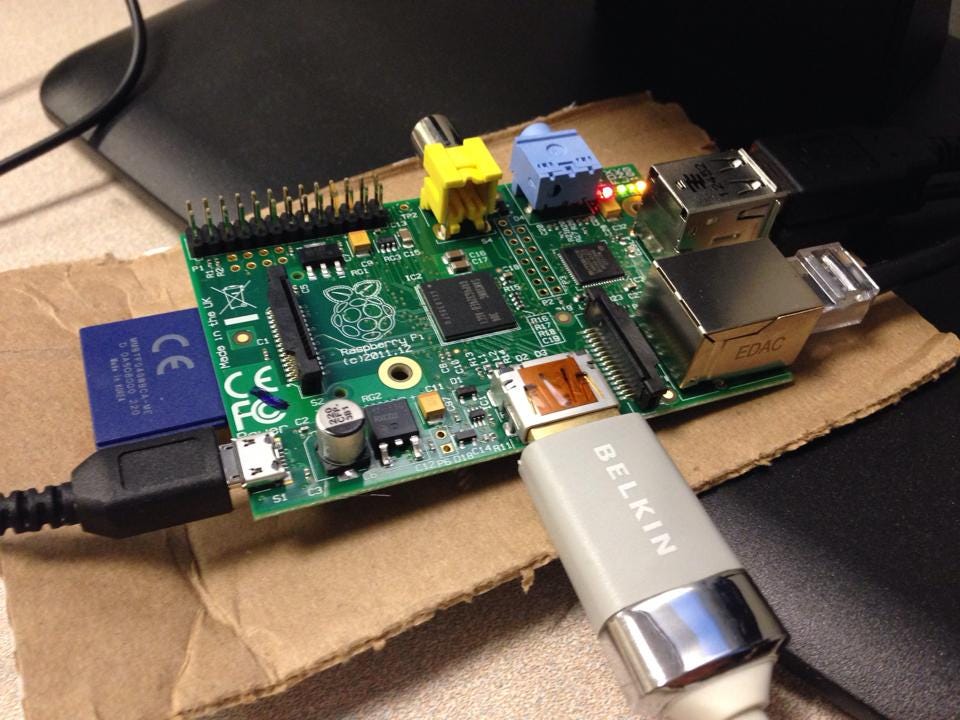Embarking on a ludicrous year spent tweeting an American classic.
Sometimes I get these nutty ideas for projects into my head, and I can’t do anything else until I’ve completed it. These ideas, often ridiculous, become an obsession. Maybe this happens to you too?
A year ago I had created a throwaway Twitter account during a short episode of obsession, lasting only a few hours. I wanted to learn about how some people gathered so many Twitter followers while producing vapid content. They were little more than robots, I observed. The theme for this Twitter account, I quickly decided, would be Mark Twain. And in a mysteriously brilliant flash, I came up with a name: Mock Twain.
I “Followed” a few hundred people, mostly friends, and some friends of friends. The pointless content would be famous quotes from Twain, but warped or modified to be (hopefully) culturally relevant, and maybe even amusing. For example:
“Giftcards are the purest form of flattery” #MockTwain
I wrote about 30 or 40 such witticisms and threw them in to a free web-app that could schedule Tweets. I queued 1 or 2 tweets per day, repeating some, and scheduled about a month’s worth of content. Project done, Cost: $0.00, Time spent: 1 rainy afternoon.
A couple months later, @Mock_Twain had about 200 followers. Not exactly the social influencing powerhouse I hoped for, but it was fun and informative.
Late in November 2013 I was struck by the @Mock_Twain bug again.
I have this hypothesis that perhaps half of Twitter is just robots in some form or another. The robots inevitably follow eachother, firing millions of pointless Tweets back and forth, creating an entire culture of autonomous personalities all vying for social influence and followers… It’s silly and a little romantic in a way, like TRON or a shitty Matrix. I want to be a part of it!
The idea bug strikes, the itch must be scratched. I will create a Twitter Robot! The @Mock_Twain profile is handy, and so it becomes a theme.
What shall my robot say? I needed a lot of content, and didn’t have time to write it. I decide to Tweet an entire book. Had this been done before? Was I recreating a well-worn wheel? A quick internet search turned up only a handful of similar projects: a robot Tweeting the entire dictionary, one guy who Tweeted the whole Bible… by hand. So far as I could tell, this was the first time it had been attempted.
My wife said her favorite Mark Twain book was “The Adventures of Tom Sawyer”, which was conveniently in the public domain and available as a text file online.
I discussed format with some tech-savvy friends. We were sure TwainBot shouldn’t simply Tweet a running 140 character window through the entire text, as it would become unreadable almost instantly. How often would it Tweet? How would it handle long sentences or short dialog? I wondered: could each character have its own Twitter handle, and the entire book be acted out like a play? (I think this would be an amazing project to do with Shakespeare, and am looking in to how to actually do it)
“A lie can travel half way around the world while the truth is looking for its iPhone charger” #MockTwain
I settled on 1 year to complete the book. Using open source (Python) tools, I broke the text in to sentences, and then applied a few silly word replacements (e.g. Be = B, You = U, etc). Long sentences would be split in to individual Tweets, short sentences (like dialog) would be combined to efficiently fill the 140 characters. In the end the book became about 3600 Tweets, meaning it would take around 10 Tweets per day to accomplish in a year. Perfect!
A day of learning new programming tools in Python was needed, setting up the authentication needed to drive a Twitter account, and how to keep track of which Tweet the robot was on. I’m a self-admitted lousy computer programmer, and this was all remarkably easy to accomplish. Bravo to the Twitter (and Dropbox) developers for making their product so easy to use!
The finishing touch for TwainBot was the hardware. I couldn’t trust my laptop to be online 24/7, so I needed a dedicated computer to run TwainBot on. A comrade in nerdy arms, Jake Vanderplas, had the perfect spare computer for the job: a “Raspberry Pi”.
The Raspberry Pi
running TwainBot
This tiny computer is the size of an Altoids tin, runs Linux, and is adored by hobbyists. It sells for around $25. Seriously.
As TwainBot runs automatically, I didn’t even need a monitor. The little “Pi” could just sit on my desk and silently Tweet!
I gave Jake $20. We chatted about some coding strategies for the project, (Jake’s a total Python grandmaster) and other off-shoots that might be fun in the future.
TwainBot was almost complete… I just needed a case for the Pi. For $10 I picked up an old hardback Mark Twain book, some wood glue, and a hobby knife. After a couple hours I had built what I thought to be a fitting enclosure:
The hollowed out book
that TwainBot lives in
The first 70 pages of Tom Sawyer were still intact (this book also contained two or three other Twain stories), and the Raspberry Pi fit safely inside. The book could sit closed on my desk, with TwainBot totally hidden but for two small wires running out the back.
“The human race has only one really effective weapon, and that is Starbucks.” #MockTwain
On 2013-Dec-12, a Thursday afternoon, TwainBot went live.
As of today (2014-Mar-19) TwainBot has sent 936 Tweets, and just recently began Chapter 8. I wanted to jot down a few lessons learned from this art project so far. Some are obvious and expected, some I found subtle…
1. Keeping a robot running 24/7 is difficult. So far TwainBot has broken down twice. Once was due to coding errors (my bad) As every programmer knows your system is guaranteed to crash in ways you didn’t expect. TwainBot is very robust because it is very simple, and I can check on it in real time. Still, in a small number of cases (about a half percent of the tweets) my logic statements screwed up and put more than 140 characters in. This causes the Twitter API to return an error (smart), but I didn’t have any kind of error trap in place (stupid). A programming 101 mistake that was trivial to correct.
By the first tweet of day #2, 9AM, TwainBot was dead…
2. Uptime is physically difficult too. Of course the Raspberry Pi is not a proper computer server. Even for such a lower-power computer, heat is an issue. Also… a book is not a good case for a computer. By the first tweet of day #2, 9AM, TwainBot was dead. I was sleeping in, and four tweets were missed before I realized something was wrong. It turned out I had cooked the Pi (hah!). That night it had overheated and shutdown. When I finally opened the book, only a single red light was glowing on the board. Cooling is a real issue, even for this mini computer. The book is now cracked open, and so problem solved… for now.
3. A year is a long time. This is a long project, and for the audience there’s a constant interaction needed to really participate. I totally failed to appreciate this point in the beginning. Some people will follow @Mock_Twain, and read a few Tweets out of novelty or amusement. Many I believe will think “Neat idea! But I’m already 8 chapters behind...” So a serious question remains: is this project interesting to anyone half way through? How could I make it more approachable? Is there a way to catch up… besides reading the book?
4. What is success? TwainBot is an art project, first and foremost. It explores the intersection between literature and technology, placing a classic text in to a new and social format. In that regard, it has already been a success. Still, what do I want at the end of the year? 10k followers? 10 followers? A lot of people have asked “why are you doing this?”. The answer is because I needed to create it. I didn’t go in to this with a motivation beyond creating something to share with people. My end goal now is to talk to as many people as I can about it, to have conversations about what it means to read a book at a very unusual pace.
“…this seems like the worst type of counterproductive, sophomoric, tech-toy wankery.” [reddit]
5. Everyone (especially on the internet) is a critic. Some people hate destroying books physically. Some people hate “destroying the art” by placing a classic book in to a medium it was never designed for. This goes directly back to #4. I want to have these conversations, and every snarky (or positive) comment on the internet is a tiny conversation people are having about the project. Ultimately that’s the goal, that people will think more about literature and technology
…and read books, because they’re still awesome.
Project continuing, Cost: $30.00, Time spent: 3 months and counting.
“The gift of age is wisdom, for example understanding the true joy of going to bed early.” #MockTwain
James Davenport (@jradavenport) is a PhD Candidate in Astronomy at the University of Washington, and author of the blog ifweassume.com. You can read more about TwainBot here, and follow @Mock_Twain on Twitter.



